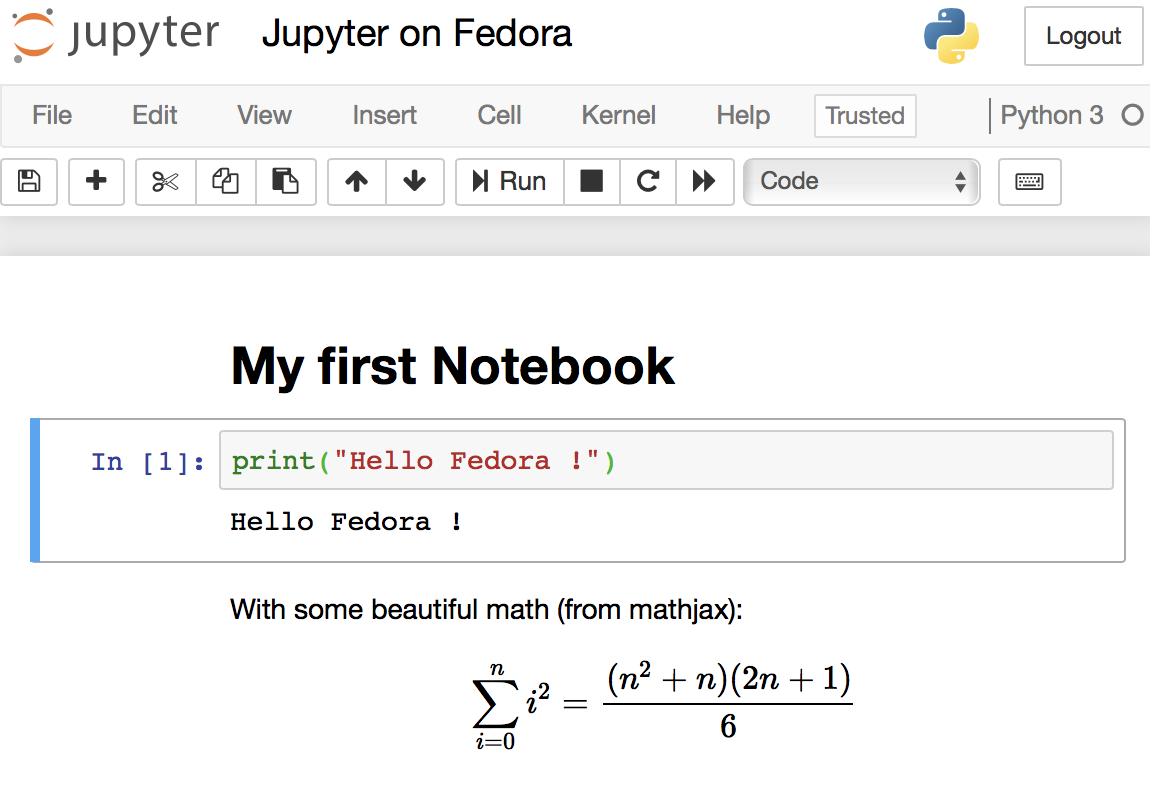

- #INSTALL JUPYTER NOTEBOOK MAC TERMINAL HOW TO#
- #INSTALL JUPYTER NOTEBOOK MAC TERMINAL INSTALL#
- #INSTALL JUPYTER NOTEBOOK MAC TERMINAL CODE#
- #INSTALL JUPYTER NOTEBOOK MAC TERMINAL DOWNLOAD#
However, if you have skipped the previous sections and directly jumped here, the below mentioned steps shows how to run the Jupyter Notebook.įirst, open a new command prompt (Windows) or terminal (Mac/Linux) on your workstation, and second, execute the following command: If you are reading this article from the beginning, then you might already know how to run Jupyter Notebook.
#INSTALL JUPYTER NOTEBOOK MAC TERMINAL INSTALL#
Execute the following command to install Jupyter NotebookĬongratulations, you have installed Jupyter Notebook! Onward to running it.Īfter you have installed the Jupyter Notebook on your computer, you are ready to run the notebook server.Open a new command prompt (Windows) or terminal (Mac/Linux).In this case, you need to install Jupyter Notebook using the pip. When you install Python directly from its official website, it does not include Jupyter Notebook in its standard library. If you get an error upon running the above command (which should not happen), try the following method. To check whether the installation is successful or not, and run the Jupyter Notebook, run the following command in the Anaconda prompt or command prompt (Windows) or terminal (Mac/Linux). Second, install the downloaded version of Anaconda.īam! You have installed Jupyter Notebook.
#INSTALL JUPYTER NOTEBOOK MAC TERMINAL DOWNLOAD#
#INSTALL JUPYTER NOTEBOOK MAC TERMINAL CODE#
While Jupyter runs code in many programming languages, Python is a requirement for installing the Jupyter Notebook.


In case the command fails and you get the error similar (not exact) to the one shown below, continue with this section to understand the installation process. Otherwise, you can safely skip this and proceed to the next section. If the above command fails, you can continue reading this section. Now that you have an idea about what Jupyter notebooks are, let's see its installation process. However, both operate in a similar fashion. Another being JupyterLab which is the advanced version of Jupyter Notebook interface. You can refer to the below-given list to get an intuitive idea about how a Jupyter notebook looks like:Ī backdrop: The Jupyter Notebook is one of two facets of the Jupyter project which started to develop open-source, open-standards for interactive computing across dozens of programming languages. Uses include data cleaning and transformation, numerical simulation, statistical modelling, data visualization, machine learning, and much more. The Jupyter Notebook is an open-source web application that allows you to create and share documents that contain live code, equations, visualizations and narrative text. I will talk about how to do so in a bit, but first let's see what its official documentation says: Apart from this, Jupyter notebook also allows you to write LaTeX code, include HTML code and embed a YouTube video. It is a web-based platform that allows you to write narrative text in various formats, include a table or an image, write equations and code in various programming languages, all in one place. Jupyter notebook comes to the rescue here. Now, you want to continue with this practice of writing all such stuff in a single place online. Not to forget that if it's a programmer's notebook, it will also contain a lot of programming code. The typical content that goes in a student's notebook can be text in various formats such as bold and italic, or a table, a mathematical equation, or creative stuff like hand-drawn images and so on. If you are a student, you must be using a class notebook to take various class notes, or if you are a business professional, you might be using a writing pad to pen down important notes, either for your purpose or to present to someone else.


 0 kommentar(er)
0 kommentar(er)
